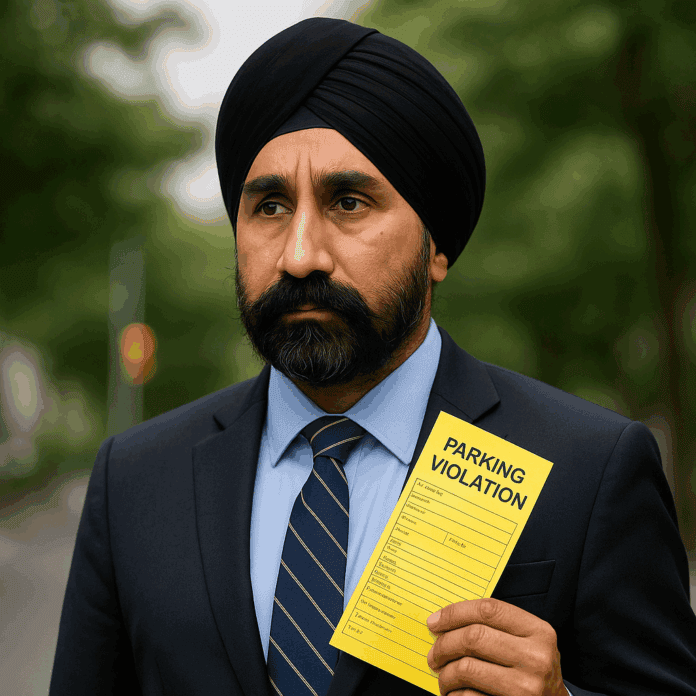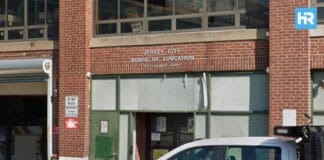Winning a ring is seen as the goal in the NBA, but many legends proved you don’t need a title to be remembered. Some of the best NBA players ever were stars who scored at will, made their teammates better, or shut down opponents on defense, yet never won the one prize everyone wants: the Larry O’Brien Trophy. These players left their mark on the game, led their teams through tough battles, and gave fans unforgettable moments, even without a title.
Here’s a full look at the greatest NBA players who never won a championship, with their stats, careers, and the stories of how they came close but never quite reached the top.
- Charles Barkley won MVP in 1993, Karl Malone scored over 36,000 points, and Tracy McGrady led the league in multiple advanced stats in 2002–03. Their production was championship-level, even without the ring.
- Reggie Miller averaged over 20 points in the postseason with elite efficiency. Allen Iverson dropped 48 in the 2001 Finals. These weren’t regular-season-only stars—they showed up when it mattered.
- Every player listed made multiple All-Star and All-NBA teams. Most are in the Hall of Fame. They didn’t need a title to be remembered.
1. Charles Barkley
Sir Charles may joke about analytics today, but the numbers absolutely loved him in his playing days. Barkley ranked no worse than third in every category used to build this list: career box plus/minus, wins over replacement, MVP shares, accolades, and playoff metrics. From 1985–86 to 1995–96, Barkley averaged at least 20 points, 10 rebounds, and 3 assists every single season, 11 straight years. Only Kareem Abdul-Jabbar has more such seasons (12). Despite standing just 6’6″, Barkley led the league in 2-point percentage for five straight years and had a 114 adjusted true shooting percentage—14% above the league average.
He was a monster on the boards, possessing the best rebounding rate of any sub-6’6″ player in the three-point era. His low center of gravity, instincts, and incredible strength made him a terror in the paint. In 1993, he won MVP and carried the Phoenix Suns to the NBA Finals, only to be stopped by Michael Jordan’s Chicago Bulls in six games. It was the closest he came to the summit.
2. Karl Malone
The “Mailman” delivered points and durability like few others. By the end of his 19-year career, Malone was first in free throws made, second in total points (now third), and second in minutes played. He ranked eighth in MVP shares, behind only legends like Jordan, LeBron, Kareem, Bird, Magic, Russell, and Shaq. He had 17 seasons scoring at least 20 points per game with over 500 minutes played—tied for most ever with LeBron and Kareem.
Malone formed one of the best duos in league history with John Stockton, playing 18 seasons together in Utah. They reached the NBA Finals in 1997 and 1998, but both times ran into Jordan’s Bulls. In 2004, a 40-year-old Malone joined Shaq and Kobe in L.A. for one last push but was derailed by injury and lost to the Pistons in the Finals. Malone averaged 25.0 points and 10.1 rebounds in the playoffs across his 19 postseason appearances, but the ring never came.
3. John Stockton
Statistically, Stockton might be the best point guard never to win a title. He is the NBA’s all-time leader in assists (15,806) and steals (3,265). Only four retired players have higher box plus/minus ratings than him: Jordan, Magic, Robinson, and Bird. In wins over replacement players, Stockton trails only LeBron and Jordan. From 1987–88 to 1996–97, he averaged 15.6 points, 12.8 assists, and 2.6 steals with a 61.9 true shooting percentage.
The Jazz, led by Stockton, had the league’s best-winning percentage and simple rating system during his prime. Yet, just like Malone, Stockton was blocked by Jordan. He made the playoffs every year of his 19-year career but never won the championship.
4. Tracy McGrady
McGrady’s 2002–03 season was legendary; he led the NBA with a 10.5 box plus/minus (20th-best ever), averaging 32.1 points, 6.5 rebounds, 5.5 assists, and 2.3 threes per game. That year, he was responsible for nearly all of Orlando’s success—the Magic were +3.2 points per 100 possessions with him on the floor and -9.8 without him. That same season, he produced 25.1 wins over replacement; the rest of the Magic’s roster totaled 0.8.
From 2000–01 to 2007–08, his 6.6 box plus/minus was behind only Kevin Garnett, LeBron, and Chris Paul. McGrady could score at all three levels and acted as a 6’8″ point-forward, but injuries and poor supporting casts kept him from reaching the Finals, though he came close as a bench player with the 2013 Spurs, who lost in seven to the Heat.
5. Allen Iverson
The Answer was perhaps the most electrifying player of his era. Over his first 10 seasons with Philadelphia, Iverson averaged 28.0 points, 6.1 assists, and 2.3 steals. He led the league in scoring four times and steals three times. During that span, he outscored the next six Sixers combined. He was never efficient, posting an above-average effective field goal percentage just once in 14 seasons, but he often had no choice but to carry the offense solo.
Iverson’s peak came in 2001 when he won MVP and led the 76ers to the Finals, stealing Game 1 from the Lakers with a 48-point masterpiece. Ultimately, he fell to Shaq and Kobe. Despite criticisms about his shot selection, AI’s teams were +0.6 with him and -2.6 without him.
6. Steve Nash
Few point guards have orchestrated offenses like Nash. The two-time MVP ran five of the top 11 offenses in NBA history (by relative offensive rating), including the 2004–05 Suns and the 2003–04 Mavericks. He led the league in assists five times and ranks fifth in total assists all-time. He’s also second in free-throw percentage and 11th in three-point percentage.
From 2004–05 to 2011–12, the Suns scored 116.4 points per 100 possessions with Nash on the floor and just 104.8 without him. Charles Barkley said of Nash, “He taught us that you can be great by making everyone else better.” Unfortunately, untimely injuries and bad luck (including the infamous 2007 suspension series vs. the Spurs) blocked his path to the Finals.
7. Patrick Ewing
Ewing was a model of consistency and power, especially from 1987–88 to 1996–97, during which he posted a 4.0 box plus/minus—only Robinson, Olajuwon, and Shaq were better among centers. He averaged 24 points, 10.6 rebounds, and 2.8 blocks during that 10-year peak and made 11 All-Star appearances in total.
Ewing carried the Knicks to the 1994 Finals during Michael Jordan’s first retirement but lost to Hakeem Olajuwon’s Rockets in seven games. In a cruel twist, Jordan returned the next season, and Ewing’s chances never looked the same. Even with his dominant defense and mid-range game, Ewing never reached the mountaintop.
8. Reggie Miller
Reggie Miller was made for playoff drama. Though he never won a title, Reggie Miller’s legend is etched in NBA history because of iconic moments like his 8 points in 8.9 seconds against the Knicks, a sequence that instantly became one of the most shocking and clutch performances in playoff history. Over his career, he shot 39.5% from three when the league average was far lower. He attempted 37.1% of his shots from deep—more than twice the league average during his career.
In the playoffs, Miller elevated his production to 20.6 points per game across 144 contests while maintaining a 60.2% true shooting percentage. His most famous moment came in 1995 when he scored 8 points in 8.9 seconds to stun the Knicks at Madison Square Garden. In 2000, he led Indiana to its only NBA Finals appearance, averaging 24.3 points in the playoffs and 24.0 in the Finals, though they lost in six games to Shaq and Kobe’s Lakers. Miller’s jersey No. 31 was retired by the Pacers, and he was honored as one of the 75 greatest players in NBA history.
9. Dominique Wilkins
From 1984–85 through 1993–94, Wilkins averaged 28.0 points, 7.0 rebounds, and 2.9 assists per game. He scored at least 25 points per game in 10 straight seasons. In Game 7 of the 1988 Eastern Conference Semifinals, he scored 47 points in a duel with Larry Bird, who called it “the best game I’ve ever played in, and the best game I’ve ever seen played.”
The Hawks lost 118–116. Wilkins led Atlanta to 10 playoff appearances but never advanced past the second round. He was a nine-time All-Star and seven-time All-NBA selection. He finished his career with 26,668 points (currently top 15 all-time), and his scoring title came in 1985–86 when he averaged 30.3 points per game.
10. George Gervin
“The Iceman” was smooth, calm, and deadly. George Gervin averaged 26.2 points per game over his 10-year NBA career—the ninth-highest in league history. He won four scoring titles (1978, 1979, 1980, 1982) and averaged 28.7 points per game from 1976–77 to 1981–82. His effective field goal percentage during that stretch was 52.5%, while the league average was 48.1%.
Gervin’s scoring included smooth perimeter jumpers and his iconic finger roll, which became his trademark. He was a nine-time NBA All-Star and a seven-time All-NBA selection. Including ABA seasons, he made the playoffs 12 times but never reached the NBA Finals. His deepest run came in 1979 when the Spurs lost to the Washington Bullets in the Eastern Conference Finals. Gervin scored 20 or more points in 407 consecutive games, one of the longest streaks in league history.
Other All-Time Greats Who Never Got the Ring
11. Russell Westbrook: 122 playoff games, 2017 MVP, triple-double seasons, and one Finals trip with OKC. Despite early promise, he’s still searching with the Clippers.
12. Chris Paul: 149 playoff games, third all-time in assists and steals, one Finals run in 2021 with Phoenix. Injuries have often disrupted his runs.
13. Jimmy Butler: 119 playoff games, two Finals appearances with Miami (2020, 2023). His 2024 postseason ended in the play-in due to a knee injury.
14. Paul George: 114 playoff games. Led Indiana to two Conference Finals, but his LA stint has been marred by injuries.
15. Damian Lillard: 65 playoff games, 2019 Conference Finals run, two buzzer-beater series winners. The first season with Milwaukee ended in a first-round exit.
16. DeMar DeRozan: 63 playoff games. Repeatedly eliminated by LeBron’s Cavaliers. Traded from Toronto the year before they won a title.
17. Joel Embiid: 59 playoff games. 2023 MVP but has never reached the Conference Finals. Injuries and team instability have haunted Philly.
18. Devin Booker: 50 playoff games. Reached 2021 Finals in his first playoff appearance, but has since faced quick exits.
19. Yao Ming: 8 seasons, 4 playoff appearances. Injuries ruined his prime. Dominated when healthy, with 8 All-Star nods and 5 All-NBA selections.
20. Amar’e Stoudemire: 14 years, 10 playoff appearances. Led the Suns in scoring during the “Seven Seconds or Less” era.
21. Derrick Rose: Youngest MVP in NBA history. Knee injuries derailed a promising career. Never made the Finals.
22. Carmelo Anthony: 19 seasons, 13 playoff runs. Ten-time All-Star but only passed the second round once.
23. Anfernee “Penny” Hardaway: Injuries limited what could’ve been a Hall of Fame career. Averaged 15.2 points and 5 assists.
24. Tim Hardaway: Five-time All-NBA selection. Helped lead Miami and Golden State but fell short in stacked East playoffs.
25. Grant Hill: Rookie of the Year, 5-time All-NBA. Multiple injuries shortened his prime, but he still lasted 18 seasons.
26. Pete Maravich: Averaged 24.2 points per game. Four playoff appearances. Dazzling scorer remembered for his flair and creativity.
27. James Harden: 166 playoff games, four Western Conference Finals, one NBA Finals appearance (2012), but no ring. His best years with Houston were stonewalled by Golden State. Currently with the Clippers.
















